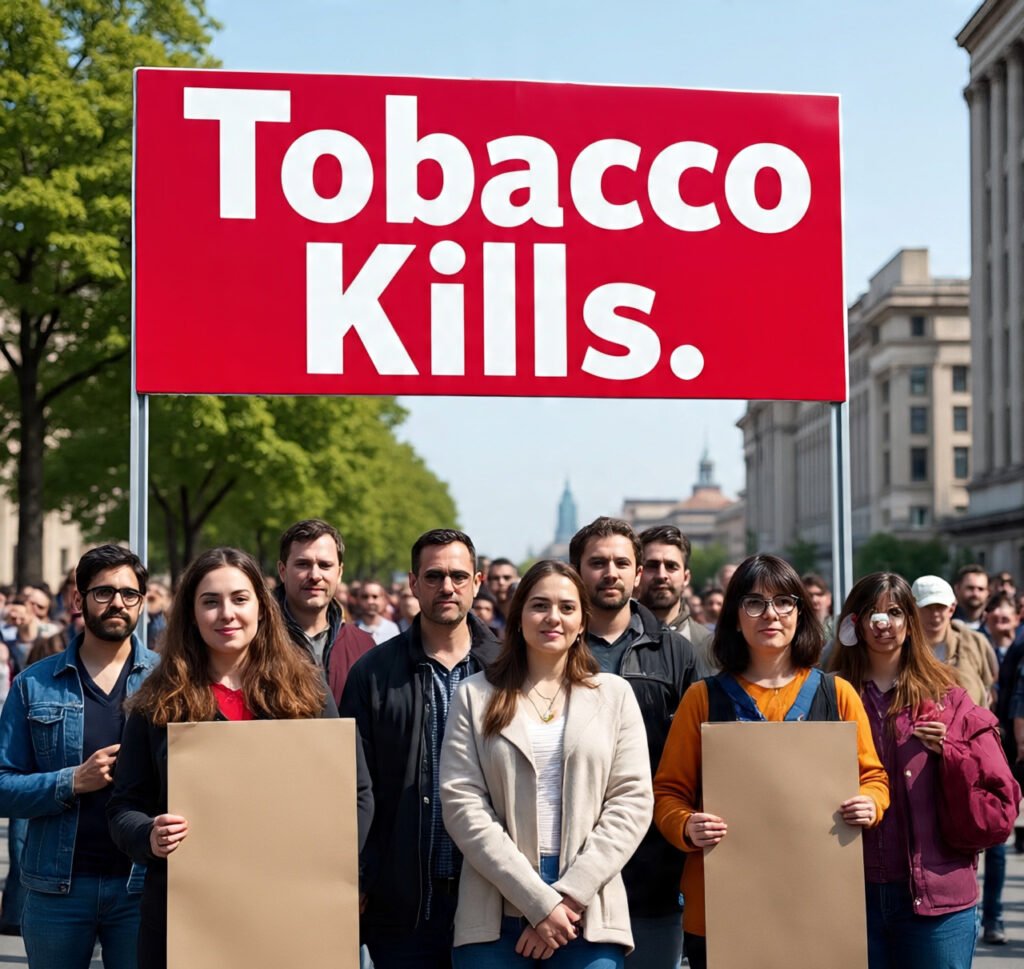The Global Tobacco Epidemic: A Preventable Crisis with Devastating Impact

Table of Contents
Overview
Tobacco use is one of the leading public health threats globally, responsible for over 7 million deaths annually. The toll includes not just premature death but also long-term disability and suffering from tobacco-related diseases. Despite increased awareness, 1.3 billion people still use tobacco, with 80% living in low- and middle-income countries, where the burden is greatest.
Tobacco is highly addictive, and its economic impact is profound — diverting household income from essentials like food and shelter, and increasing healthcare costs and productivity losses.
No Safe Form of Tobacco
All forms of tobacco are harmful. These include:
Cigarettes (most common)
Waterpipes, cigars, cigarillos, roll-your-own, and pipe tobacco
Bidis and kreteks
Heated tobacco products (HTPs)
Smokeless tobacco
Nicotine pouches and e-cigarettes
There is no safe level of exposure to tobacco or second-hand smoke.
Key Strategies to Reduce Tobacco Use
1. Monitor Tobacco Use
Robust surveillance helps governments tailor policies. Almost half the world’s population is regularly surveyed on tobacco use.
2. Protect People from Second-Hand Smoke
Second-hand smoke causes 1.6 million deaths annually, linked to heart disease, lung cancer, and respiratory illnesses. Today, over a third of the global population is protected by comprehensive smoke-free laws.
3. Offer Help to Quit
Most smokers want to quit, and counselling plus medication can double success rates. Yet, only 31 countries offer nationwide cessation services with full or partial coverage.
4. Warn About the Dangers
Pictorial health warnings on packaging and mass media campaigns have proven effective in reducing tobacco use. Over 62% of the global population lives in countries that require graphic warnings, and 2.9 billion people live in countries that have run strong anti-tobacco campaigns recently.
5. Enforce Bans on Advertising
Tobacco advertising, promotion and sponsorship (TAPS) increase consumption. Only 68 countries have completely banned TAPS, covering just a quarter of the world’s population.
6. Raise Taxes
Tobacco taxation is the most cost-effective way to reduce consumption. A 10% price hike reduces use by about 4% in high-income and 5% in low- and middle-income countries. However, only 41 countries tax tobacco enough to make up at least 75% of the retail price.
Illicit Trade and New Products: Emerging Challenges
Illicit Tobacco Trade
Roughly 1 in 10 tobacco products consumed worldwide is illicit, undermining public health efforts. However, effective enforcement and tax policies can reduce illegal trade while increasing revenues.
The WHO FCTC Protocol to eliminate illicit trade is a vital tool for countries.
Heated Tobacco Products (HTPs)
HTPs produce aerosols with nicotine and toxic chemicals. Though marketed as “reduced risk,” evidence does not confirm lower harm. Some toxins in HTPs are absent in regular cigarettes, while others are present at higher levels.
Electronic Nicotine Delivery Systems (ENDS)
These include e-cigarettes, e-pipes, and e-cigars, often called “vapes.” They emit harmful aerosols including nicotine and other toxins. Some “nicotine-free” products have been found to contain nicotine, raising concerns about mislabeling and youth uptake.
Studies show vaping may increase risk for heart disease, lung disorders, and harm fetal and brain development in youth and pregnant women.
Nicotine Pouches
Promoted as “tobacco-free,” these products contain high levels of nicotine and are designed to be used discreetly, raising regulatory and public health concerns.
WHO’s Response: The MPOWER Strategy
The WHO Framework Convention on Tobacco Control (WHO FCTC), in effect since 2005, now includes 182 Parties, representing over 90% of the world’s population. It is the first international treaty to combat a global health crisis with legal obligations.
In 2007, WHO introduced MPOWER, a six-part strategy to reduce tobacco demand:
Monitor tobacco use and prevention policies
Protect people from tobacco smoke
Offer help to quit
Warn about the dangers of tobacco
Enforce bans on tobacco advertising
Raise taxes on tobacco
WHO tracks global progress through regular Global Tobacco Epidemic Reports.
Conclusion
Tobacco use remains a preventable cause of death and suffering, heavily driven by an industry whose products fuel addiction and illness. Despite resistance, global efforts through the WHO FCTC and MPOWER measures are gaining ground — but stronger enforcement, taxation, and public awareness remain crucial to ending this epidemic.
